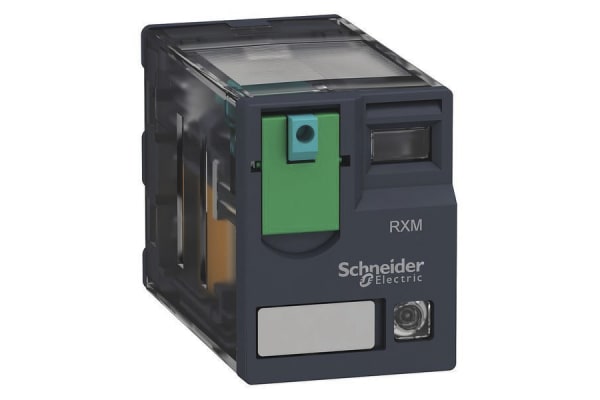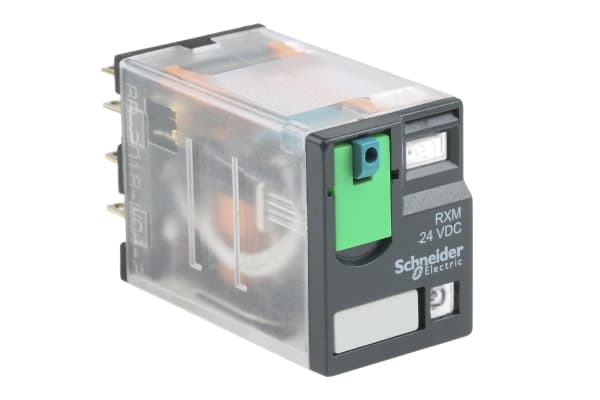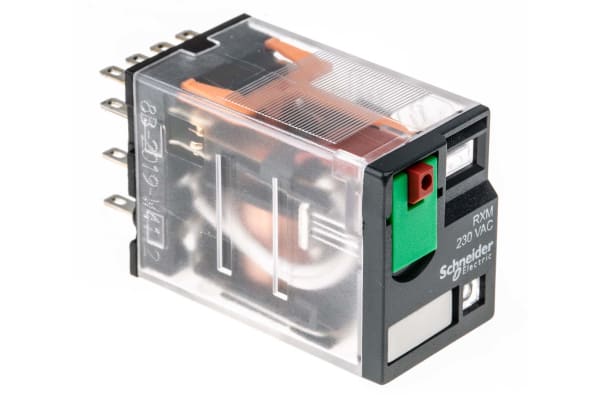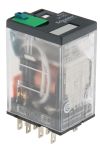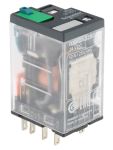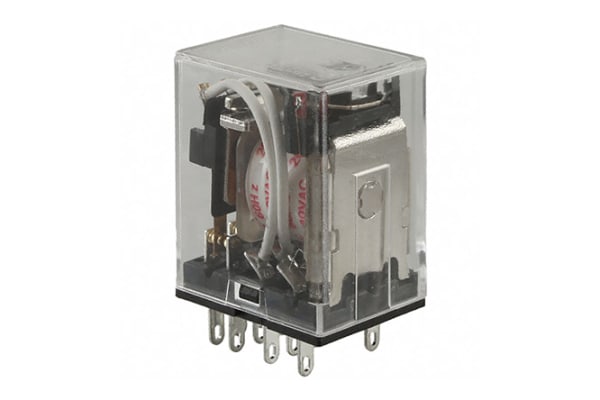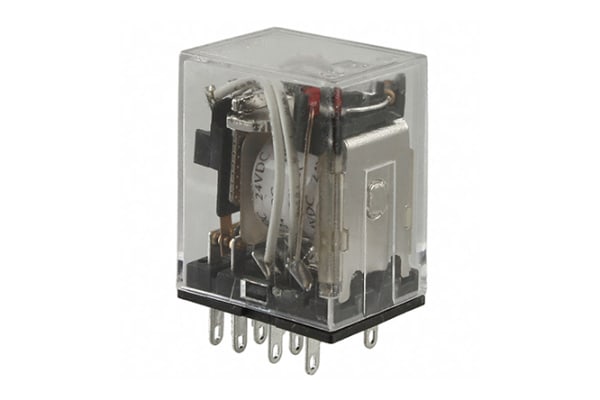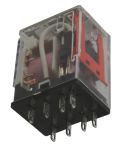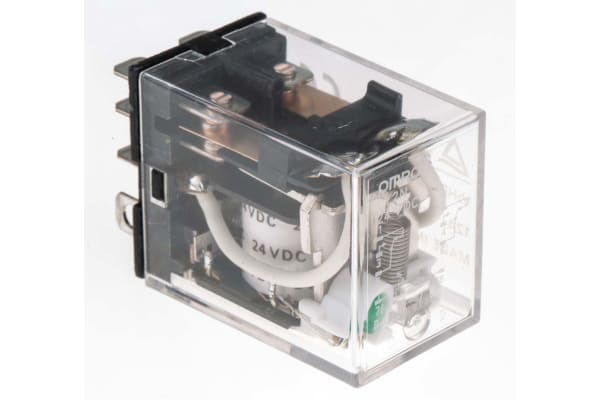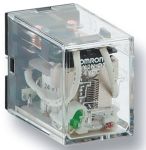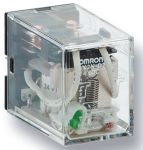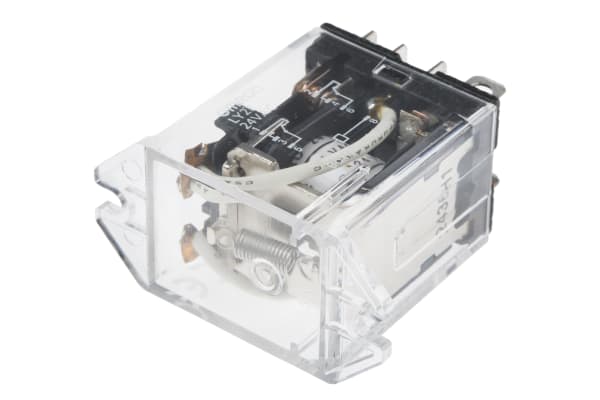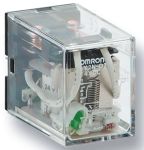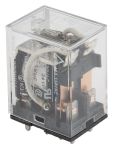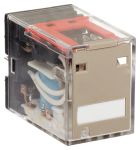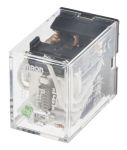Non-Latching Relays
Relays are electrical switches that are operated by electrical impulses with the primary function to open and close a circuit, they can also be referred to as industrial switches. There are 2 main types available, latching and non–latching relays.How do non-latching relays work?Non-latching relays are in a normally closed (NC) position and will stay in this state without power. When power passes through the circuit, the relay switched to a normally open (NO) position by using an internal coil to generate a magnetic force, holding this NO position. Once the current is turned off, it returns to the NC position. This makes non-latching relays well suited to push-button applications like keyboards and micro-controller input buttons.What are non-latching relays used for?Non-latching relays are highly durable and versatile components, making their performance long lasting and suitable for use in a wide range of applications, such as:Automotive enginesHousehold appliancesIndustrial machineryMedical equipmentTelecommunications equipmentWhat is the difference between latching and non-latching relays?Both types of relays in similar in design and function, however, a significant difference between them is that a latching relay will remain in the last position it when it was last powered, whereas a non-latching goes back to its normal position. This makes each more type of relay suitable for different applications. Considerations when selecting a relayWhen choosing a relay, it is important to consider a number of specifications to ensure it is fit for purpose, some factors include:Coil voltage – the required voltage to actuate the switching mechanism. If a voltage is too high this could damage the components, if it is too low then it will not actuate. Contact configuration – This is the state the contacts are in without power. For example SPST, single pole single throw.Contact material – the relay contacts are available in many materials that have certain properties. Common materials are gold, silver, tin oxide and nickel Coil power – the amount of power (watts) the coil operates at. This must match the power in the circuit for correct function. Coil resistance – the amount of resistance (ohms) in the circuit that the coil creates.
-
Schneider Electric, 24V dc Coil Non-Latching Relay DPDT, 12A Switching Current Plug In, 2 Pole, RXM2AB1BD
IDR146,846.00 -
Schneider Electric, 120V ac Coil Non-Latching Relay 4PDT, 8A Switching Current Plug In, 4 Pole, RXM4AB2F7
IDR201,703.47 -
Schneider Electric, 24V dc Coil Non-Latching Relay 4PDT, 8A Switching Current Plug In, 4 Pole, RXM4AB2BD
IDR205,899.07 -
Schneider Electric, 230V ac Coil Non-Latching Relay 4PDT, 8A Switching Current Plug In, 4 Pole, RXM4AB1P7
IDR177,998.33 -
Schneider Electric, 230V ac Coil Non-Latching Relay 4PDT, 8A Switching Current Plug In, 4 Pole, RXM4AB2P7
IDR205,689.29 -
Schneider Electric, 24V ac Coil Non-Latching Relay 4PDT, 8A Switching Current Plug In, 4 Pole, RXM4AB1B7
IDR181,459.70 -
Schneider Electric, 24V dc Coil Non-Latching Relay 4PDT, 8A Switching Current Plug In, 4 Pole, RXM4AB1BD
IDR165,096.86 -
Schneider Electric, 24V dc Coil Non-Latching Relay DPDT, 12A Switching Current Plug In, 2 Pole, RXM2AB2BD
IDR185,760.19 -
-15.30%
Schneider Electric, 230V ac Coil Non-Latching Relay SPDT, 10A Switching Current Plug In Single Pole, RXG15P7
IDR125,763.11IDR82,548.43 -
Schneider Electric, 24V dc Coil Non-Latching Relay DPDT, 5A Switching Current Plug In, 2 Pole, RXG22BD
IDR162,369.72 -
Schneider Electric, 230V ac Coil Non-Latching Relay DPDT, 5A Switching Current Plug In, 2 Pole, RXG22P7
IDR265,371.70 -
Honeywell, 220V ac Coil Non-Latching Relay 4PDT, 3A Switching Current Plug In, 4 Pole, SZR-MY4-N1-AC220V
IDR671,925.34 -
Honeywell, 24V dc Coil Non-Latching Relay 4PDT, 3A Switching Current Plug In, 4 Pole, SZR-MY4-N1-DC24V
IDR547,211.13 -
Honeywell, 24V dc Coil Non-Latching Relay DPDT, 10A Switching Current Plug In, 2 Pole, SZR-LY2-N1-DC24V
IDR635,948.07 -
Omron, 110V dc Coil Non-Latching Relay DPDT, 10A Switching Current Plug In, 2 Pole, LY2ND2DC100110
IDR412,951.93 -
Omron, 110V dc Coil Non-Latching Relay DPDT, 5A Switching Current Plug In, 2 Pole, MY2DC100110S
IDR80,450.63 -
Omron, 24V dc Coil Non-Latching Relay DPDT, 10A Switching Current Plug In, 2 Pole, LY2N-DC24
IDR249,847.98 -
Omron, 12V dc Coil Non-Latching Relay DPDT, 10A Switching Current Plug In, 2 Pole, LY2N-DC12
IDR230,023.77 -
Omron, 24V dc Coil Non-Latching Relay DPDT, 10A Switching Current Plug In, 2 Pole, LY2I4N DC24
IDR226,352.62 -
Omron, 24V ac Coil Non-Latching Relay DPDT, 10A Switching Current Plug In, 2 Pole, LY2F-AC24
IDR193,941.61 -
Omron, 24V dc Coil Non-Latching Relay DPDT, 10A Switching Current Plug In, 2 Pole, LY2D-DC24
IDR305,964.13 -
Omron, 24V dc Coil Non-Latching Relay DPDT, 10A Switching Current PCB Mount, 2 Pole, LY2-0-DC24
IDR180,201.02 -
Omron, 12V dc Coil Non-Latching Relay 4PDT, 5A Switching Current Plug In, 4 Pole, MY4N DC12 (S)
IDR144,538.42 -
Omron, 24V dc Coil Non-Latching Relay 3PDT, 5A Switching Current Plug In, 3 Pole, MY3N-DC24
IDR264,113.02



